 |
21st Century Skills and Play |
1.00 |
In this course, you will identify skills considered to be essential for success in the 21st century, and examine the critical connection between these skills and academic learning. You will also explore how one Key Learning Area from Learning Standards for Early Childhood - Approaches to Learning through Play - can help you promote the development of 21st Century Skills in the children with whom you work. |
 |
21st Century Skills in Young Children |
1.00 |
In this course, you will identify skills considered to be essential for success in the 21st century, and examine the critical connection between these skills and academic learning. You will also explore how one Key Learning Area from Learning Standards for Early Childhood - Social and Emotional Development - can help you promote the development of 21st Century Skills in the children with whom you work. |
 |
Adult and Child CPR |
2.00 |
In this course, you will learn how to properly perform Adult and Child CPR that may someday enable you to save someone's life. |
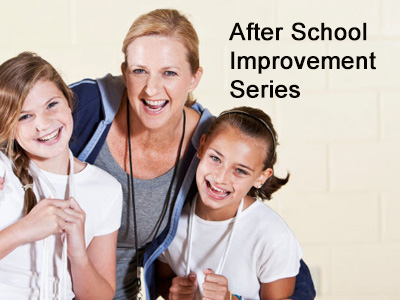 |
After School Improvement Series: Emergency Action Plans |
0.50 |
Like all other early childhood and school-age settings, after school programs need to consider how they prepare for and respond to emergency situations, from natural disasters, like storms, earthquakes, tornados, flash floods, or volcanic eruptions; fires; power outages; missing children; or acts of violence, including active shooter situations. Some emergency situations may require evacuation, while others may initiate a lock down, or shelter-in-place. The best way to prepare for emergency situations is to plan for them. We can do this by considering the kinds of emergency situations we might encounter, and then developing a series of procedures and protocols for responding to them. Your program’s Emergency Action Plan sets out your role and responsibilities should any of these emergencies occur.
|
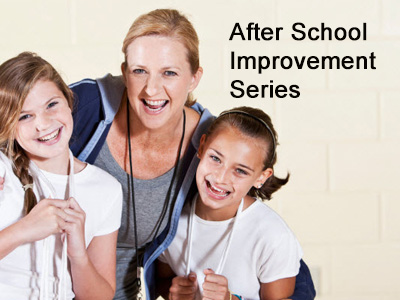 |
After School Improvement Series: Indoor Environments |
0.50 |
This webinar will discuss the role a well-planned indoor environment plays in supporting the developmental needs of school-age children. It will talk about the use of interest areas as tools for creating an indoor environment that supports children’s interests and developmental needs. In addition, we’ll learn how to plan indoor environments that are warm and inviting, help children feel welcome and comfortable and will allow them to participate in different activity areas at the same time without disturbing one another. And finally, we’ll discuss the role a well-planned indoor environment plays in keeping children safe and engaged. |
 |
After School Improvement Series: Outdoor Environments |
0.50 |
The After School Improvement Series: Outdoor Environments course will:
Describe different types of outdoor environments, along with the opportunities and challenges each one offers.
Discuss the role outdoor environments play in encouraging children to be active, while promoting a range of different experiences.
Identify the steps you can take to ensure that the outdoor environment is safe and accessible for all children.
Explore how outdoor environments can be used to extend learning opportunities found in indoor environments.
|
 |
Attention-Deficit/Hyperactivity Disorder (ADHD) |
0.50 |
This course covers Attention-Deficit/Hyperactivity Disorder, also known as ADHD. A key discussion point of this course is whether ADHD is the wandering of attention, which is a trait, versus the deficit of attention, which is a disorder. We'll cover topics that include what ADHD is, its characteristics, the signs of ADHD, and possible medications or accommodations. It is just one out of many educational courses we offer. This course will help you develop new knowledge about children and help you better understand your role. |
 |
Autism and Bullying |
0.50 |
This course covers Autism spectrum disorder (ASD) and Bullying. The course will begin by going over what autism is, and then it will continue to teach you about the bullying that may occur along with it, and how you can assist. This content will help you learn more about children with ASD and will help you understand how you might support these children. |
 |
Autism Spectrum Disorder |
1.50 |
This course covers autism spectrum disorder (ASD), focusing on how it is diagnosed, how it presents in the classroom, and school supports. This content will help you increase your knowledge about students with ASD and will help you understand how you might support these students. |
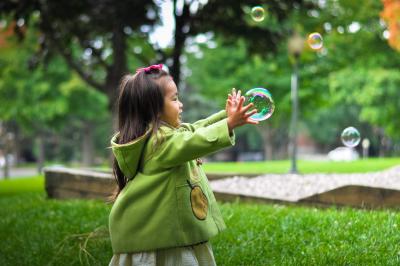 |
Basic Health & Safety Requirements for Certification |
6.00 |
Best practices and standards for health and safety are the foundation of quality child care. Meeting the basic health and safety needs of all children sets the stage for positive child outcomes.
This health and safety orientation module provides an overview of the basic health and safety requirements and best practices in nine of the topic areas outlined in the Child Care and Development Block Grant (CCDBG) Reauthorization of 2015. The topics are as follows:
Safe spaces; Transportation safety; Handling and storage of hazardous materials; Emergency preparedness; Prevention and control of infectious disease; Food and allergic reactions and how to respond; Administration of medication; Shaken baby syndrome/abusive head trauma; Safe sleep and SUIDS prevention.
This course is designed to meet your professional development needs. It can be taken as a stand-alone learning event, or as part of a broader early childhood education curriculum. In addition to state child care regulations, there may be other health and safety measures required by your municipality, township, or county. Check with county or local offices for information on local health and safety requirements. |
 |
Become an Energenius® |
2.00 |
CalSAC has partnered with the Pacific Gas & Electric Company (PG&E) to bring the Energenius® Out-of-School Time Program to our online training platform. This FREE environmental stewardship curriculum is designed to engage children and youth to think about how they use energy, how energy is measured, paid for, and ways to save energy. Children and youth will understand how they can help reduce the impacts of energy use and production on the environment, and also practice influencing others to take energy-saving actions. Additionally, the curriculum is uniquely and intentionally designed to engage families in energy and water conservation habits.
Become an Energenius® is Activity Guide #4 in the 4-part Energenius® Out-of-School Time Program. The curriculum and activities are designed to engage children and youth to think about how they can save energy, how to recycle, reduce and reuse, and actions they will take to promote energy efficiency in their homes and community. This course will prepare participants to deliver the activities from the Become an Energenius® Activity Guide as well as sharing energy saving resources with families. |
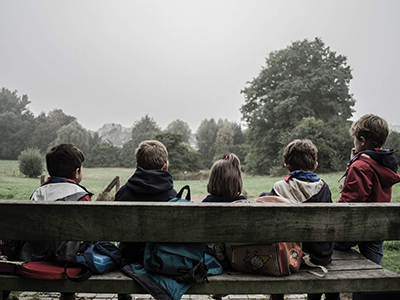 |
Child Abuse Prevention and Awareness |
1.25 |
Unfortunately, child abuse is a prevalent issue in today's world. Child care workers and volunteers, coaches, and others who work with children must be knowledgeable about the topic to ensure children's safety. This course will make you aware of the many issues related to child abuse and help you recognize and prevent child abuse within and outside of program walls. It offers advice about how to respond to a child who divulges abusive information and what to do with this information. As someone who works with children you will learn how to protect the child, your organization, and yourself from accusations of abuse. |
 |
Child Abuse Prevention and Awareness for Supervisors and Managers |
1.50 |
If a staff member or volunteer in a child-related program approaches his or her supervisor with a case of suspected child abuse the supervisor must know how to handle the situation to ensure the safety of everyone in the program. This course provides supervisors with a wealth of information about how to recognize and prevent child abuse within program walls, and furthermore, the steps to take when a situation of child abuse arises. In addition, you will learn best practices for yourself, your staff and your organization.
|
 |
Creating a Safe and Respectful Environment for Our Nation's Children and Youth |
0.75 |
This course will provide you with the knowledge and skills to create safer, more inclusive environments for children. You will learn about the dynamics of bullying, the impact it has on those who are bullied, and strategies for prevention. |
 |
Cyberbullying |
1.00 |
Cyberbullying is bullying that takes place over digital devices like cell phones, computers, and tablets. Cyberbullying can occur through SMS, text, and apps, or online in social media, forums, or gaming where people can view, participate in, or share content. Cyberbullying includes sending, posting, or sharing negative, harmful, false, or mean content about someone else. It can include sharing personal or private information about someone else, causing embarrassment or humiliation. Some cyberbullying crosses the line into unlawful or criminal behavior.
In this course, you will:
• Learn the definition of cyberbullying
• Discover tactics on preventing cyberbullying
• Discover tips on communicating with parents and teachers, and how to report instances of cyberbullying |
 , , 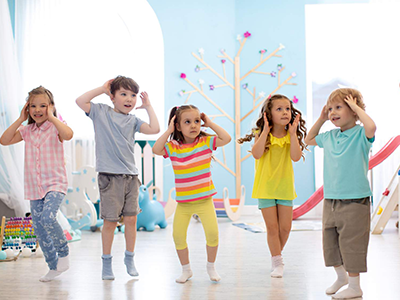 |
Dance for Joy: Confident, Calm, and Compassionate |
1.00 |
This module from Dance for Joy will provide teachers with resources and activities that can be used and modified to support physical, mental, social, and emotional development in young children.
This course covers 5 activities: Tickle the Sky, Tapping, Every Little Cell, We are One, Scoop up the Universe. |
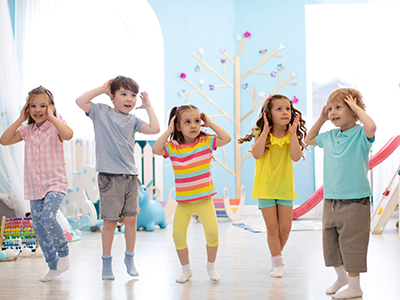 |
Dance for Joy: Movement, Music, and Rhyme |
1.00 |
This module from Dance for Joy will provide teachers with resources and activities that can be used and modified to support physical, mental, social, and emotional development in young children.
This course covers 5 activities: I Touch My Nose, I Touch My Toes, Hold Yourself Tight, Wake Up Right, Reach One Way, Reach the Other, Locomotor Freeze Dance, Salt and Pepper Dance. |
 |
Development and Characteristics of Learners for Teachers |
1.00 |
Development and Characteristics of Learners will assist you in fostering a solid understanding of how children develop and the disability categories that may impact their learning. This course will also help you gain invaluable insight into ways you can support children and meet their needs. |
 |
Down Syndrome |
0.50 |
This course will help you understand the unique characteristics that children with Down syndrome possess and the challenges that they face. It will provide you with knowledge on how to create the best learning environment possible to meet their needs by giving you specific ways to plan your curriculum and ways in which you can encourage communication. You will feel prepared to make accommodations to welcome children with Down syndrome into your classroom. |
 |
Dyslexia |
1.00 |
This course will provide you with an overview of dyslexia to help you understand what it is all about, the challenges a student with dyslexia faces, and the best ways in which teachers can effectively support students with this disability. |
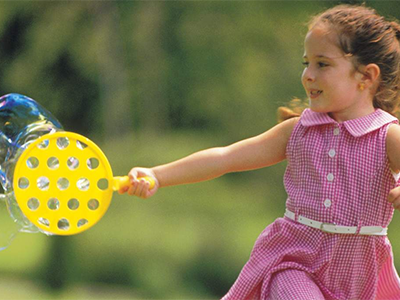 |
Energy and the Environment |
2.00 |
CalSAC has partnered with the Pacific Gas & Electric Company (PG&E) to bring the Energenius® Out-of-School Time Program to our online training platform. This FREE environmental stewardship curriculum is designed to engage children and youth to think about how they use energy, how energy is measured, paid for, and ways to save energy. Children and youth will understand how they can help reduce the impacts of energy use and production on the environment, and also practice influencing others to take energy-saving actions. Additionally, the curriculum is uniquely and intentionally designed to engage families in energy and water conservation habits.
Energy and the Environment is Activity Guide #2 in the 4-part Energenius® Out-of-School Time Program. The curriculum and activities are designed to engage children and youth in understanding how energy is produced, where energy comes from, and some impacts of energy use and energy production on the environment. This course will prepare participants to deliver the activities from the Energy and the Environment Activity Guide as well as connect families to resources to help save energy and money. |
 |
Energy and You! |
2.00 |
CalSAC has partnered with the Pacific Gas & Electric Company (PG&E) to bring the Energenius® Out-of-School Time Program to our online training platform. This FREE environmental stewardship curriculum is designed to engage children and youth to think about how they use energy, how energy is measured, paid for, and ways to save energy. Children and youth will understand how they can help reduce the impacts of energy use and production on the environment, and also practice influencing others to take energy-saving actions. Additionally, the curriculum is uniquely and intentionally designed to engage families in energy and water conservation habits.
Energy and You is Activity Guide #1 in the 4-part curriculum Energenius® Out-of-School Time Program. The curriculum and activities are designed to engage children and youth to think about how they use energy, how energy is measured and paid for, and ways to save energy. This course will prepare participants to deliver the activities from the Energy and You Activity Guide as well as connect families to resources to help save energy and money. |
 |
Engaging English Learner Families and Communities |
2.00 |
This online course serves as a compliment to Healthy Cultural Identities and Engaging Families and Communities, an in-person training offered through CalSAC's English Learner Training and Professional Development Project. This course will help participants go deeper and gain more examples and strategies related to some of the 5 Tips for Engaging English Learners' Families and Communities introduced in the training. |
 |
Engaging High School Youth in College & Career Readiness |
1.00 |
This course will introduce participants to the College & Career Readiness Toolkit, developed by the Maryland Out-of-School Time (MOST) Network, as well as developmentally appropriate activities and considerations for implementing college & career readiness with high school youth in an out-of-school time setting. |
 |
Engaging Middle School Youth in College & Career Readiness |
1.00 |
This course will introduce participants to the College & Career Readiness Toolkit, developed by the Maryland Out-of-School Time (MOST) Network, as well as developmentally appropriate activities and considerations for implementing college & career readiness with middle school youth in an out-of-school time setting. |















 ,
, 










